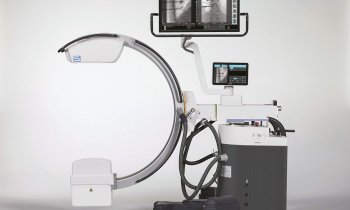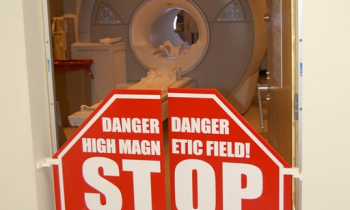The healing environment
Maximilian von Eiff of the Centre for Healthcare Management in Munster Germany, presents the effects of better surroundings on patients, visitors and hospital staff
The healing environment approach is a comprehensive concept targeting the elimination of stress factors for patients as well as their visitors that would otherwise minimise patient's wellbeing, impair the healing process, or even violate their dignity/privacy.

The world’s developed healthcare systems are showing tendencies towards medical hospital care that is marked by patient-oriented performance, organisation and service structures. The goal of such care concepts cater for
- Patients’ individual characteristics (personality structure, attitude towards disease, social background, mental capacity)
- Personal expectations with regard to humane treatment.
Risks of hospital stays
The origin of the healing environment approach is, first, the empirically proven recognition that a patient is exposed to health-threatening risks during a hospital stay that are avoidable through proper organisation, attitude and behaviour:
- 128,000 wound infections in German hospitals annually cause costly aftercare, longer stays and troubles for patients and their families.
- 44,000 to 98,000 deaths in US hospitals each year are caused by ‘adverse events’ and 7,000 deaths are ‘adverse drug events’.
- Patient falls, undetected dehydration and uncontrolled medication administering cause complications and require costly aftercare that worsen the outcome for patients.
Second, the healing environment approach is grounded in part on the observation that diagnosis and therapy processes – many times due to costs – are not ideal in the sense of pain and fear-free treatment, short stays, and quick convalescence; fast track surgery, consisting of minimally invasive surgery techniques, pain-management, anaesthesia control, diet plans and management of the entire process are still an exception.
The third reference point of the healing environment approach pertains to surroundings: In most hospitals, the emotionally influencing functioning conditions (e.g. sanitary facilities, placement in a multi-bed room), the décor (colours, shapes), noises, smells and treatment processes, communication and behaviour all take on a negative effect on the wellbeing, state of immunity and compliance of the patients.
The healing environment approach also assumes that you can find care situations in most hospitals that
- endanger patients unnecessarily
- lengthen stays
- foster iatrogeneous risks and nosocomial infections
- worsen the patient’s outcome because of feelings such as fear, disgust, embarrassment, subjection and obstipation.
The discoveries especially gain meaning with regard to a paradigm shift of the physician-patient relationship: The traditionally very structured physician-patient relationship with the dominant technical and social competence of the practitioner is changing through the role of the patient, who is more informed and thus more demanding (second opinion, demanding information and service).
The healing environment approach assumes that through a co-operative style of the physician-patient relationship the self-confidence of patients can be improved; the willingness to be actively involved in fighting the disease (compliance) and therefore mobilising self-healing forces supports and accelerates healing success and opens up the chance to procure a healthy lifestyle (Life-Cycle of Care Approach).
The patient’s ever rising demand for information in the sense of current, future, understandable, individual and comprehensive information, as well as the increasing demand for individuality and diagnosis-depending privacy, can be deduced from changing societal norms and values, or in some countries (e.g. Japan, Singapore, USA) to co-payment requirements.
The image of hospitals is changing from healing facility to hotel. Likewise the societal attitude has changed: In the past it was considered normal that one’s privacy was shared by fellow sufferers; today privacy has gained the highest significance in a case of illness.
Stress factor: ‘hospital’
During a hospital stay, patients experience stress that is caused by and/or amplified through environmental influences (and not through the disease itself).
Triggers for healing inhibiting stress are painful procedures, loss of self-determination, depersonalisation through the bureaucratic system, limited mobility and the interruption of social contact.
A significant part of stress is generated by limited building functionality that inhibits process organisation, does not allow for privacy, produces disruptions, does not allow for private gatherings of visitors and also does not grant an outside view of the natural environment.
For the patient him/herself stress experiences present, on the one hand, an emotional sense of medical quality and, on the other, stress experiences can influence other negative emotions that can be reduced to four components:
- The psychological component includes worrying thoughts, as well as feelings of helplessness, fear and sadness.
- The physiological component encompasses changes of activity of the entire body; including high blood-pressure, pulse rate, muscle tension and constipation.
- The neuro-endocrine component refers to the changes in the hormonal system (e.g. cortisol, adrenalin) that influences the cardiovascular system.
- The behavioural component of stress describes behaviour phenomenona such as passivity, social isolation, verbal/emotional derailment, insomnia and non-compliance with therapy requirements.
Generally, the body’s own reactions to stress (e. g. increased adrenalin) are there to help humans deal with threatening situations on a short-term basis. But, stress reactions consume energy and lead to bodily exhaustion. Stress reactions increase neuro-endocrine activities and stimulate the central nervous system. Consequentially, the immune system is repressed, which in turn heightens the danger of infection and the quality of the healing process suffers. Thus the healing process of stressed patients takes much longer (Kiecold-Glaser et. al., 1995); this leads back to the stress hormone cortisol. On the other hand, if a patient experiences a pleasant hospital environment, norepinephrine levels decrease; as a result the patient experiences less pain, sleeps more peacefully, feels less anger, does not suffer muscle tension and has a reduced stroke risk (Rabin <1999>).
Stressors and anti-stressors
Notable stressors with significant effects to patient well-being, healing process and healing results, are noise-level, interruption of privacy, unpleasant smells (sweat, faecal odours) of fellow sufferers, emergency measures on another patient and pain.
Noises
The World Health Organisation (WHO) recommends a maximum noise level of 35 dB for patient rooms with a maximal nightly noise level of 40 dB. By comparison, the actually measured average noise level in hospitals comes to about 68 dB, with peaks of up to 80 and 90 dB.
Noises starting at 38 dB already lead to fragmented sleep, increase pulse rate and blood-pressure (Berg <2001> and Blomkvist et. al. <2005>).
Noises in neonatal intensive care units cause a decline in the oxygen-level and require an additional supporting oxygen therapy. Noises lead to insomnia, raised blood-pressure and pulse rate, as well as respiration (Slevin et. al. <2000> and Zahr/de Traversay <1995>).
In a Healing Environment, overhead paging or announcements should not be made; it was discovered that it scared patients.
Single-bed rooms
Measures to create healing-supportive environments are rejected by most hospital sponsors, in relation to disproportionally high investment and operating costs, as well as not proven effects on process and outcome quality.
Counter evidence was produced by the Fable Hospital model project on evidence-based design in hospitals that shows the following connections:
- Large one-bed rooms (as the general layout) reduce disrupting noises, eliminate unpleasant influences through fellow patients, uphold privacy, enable self-determination and a peaceful visit by family and friends. Nosocomial infections were drastically reduced. If you assume that 5-10 % of all patients contract nosocomial infections and thus incur avoidable costs in the realm of US$ 4,000-7,000, an investment in single-bed rooms not only improves the overall image but also lowers costs.
- Single-bed rooms with complete technical infrastructure enable the flexible adjustment of technically equipping the room according to the patient’s condition. Cost incurring and risky relocation (loss of information) are avoided. It was estimated that the Fable-project would reduce costs by US$3.8 million a year compared with conventional design (four people wards), assuming relocation costs of US$250-300, and a reduction of such relocation of up to 80 %, with an estimated 19,500 patients a year.
Accessing nature
In various studies, virtual and physical accesses to nature (trees, plants, water...) have proved stress-reducing and an aid to healing (Tkayanagic <2005>). Abdominal surgery patients, placed in a room with a view of the natural environment, needed far fewer pain-killers, displayed more stable mental conditions and had shorter hospital stays than patients who only had small windows with views of walls (Ulrich <1984>; Ulrich/Zimring <2004>).
Patients and family members who spent visiting hours in nicely cared for gardens (components: water, plants, trees, light, places to sit) showed a higher satisfaction with their stay than patients who did not enjoy such possibilities of relaxation and individual undisturbed communication (Whitehouse et. al. <2001>).
Images and art
Patients conceive images of rural landscapes and nature (ocean surf, streams, meadows, forests, mountains, etc.) as calming: Stress is reduced; pain is significantly less perceived.
By contrast, abstract art is perceived as threatening and frightening. The reason: the depiction is ambiguous and calls for interpretation. An image showing an empty chair causes associations of impending death in seriously ill patients (Malkin, 2006).
Conversely, hand crafted art exhibits cause a positive reaction in patients and visitors.
Conclusion
The healing environment approach is a holistic concept that aims to avoid exposing patients and their visitors to stressors that will inhibit the healing process; for this, effects should be mobilised that will support the overall outcome. Research in this field is carried out in the following areas:
1. Connection of patients/family to nature
2. Social and emotional support
3. Elimination of stressors in the hospital environment
4. Positive distractions
5. Patient information and behavioural change (patient education);
6. Medical process, structures and outcome quality (e.g. Fast Track Surgery).
The basic pillars of this approach are evidence-based design, patient-focused organisational culture and medical capability.
A healing environment
- creates rituals and organisational help that encourages patients’ healing supportive behaviour
- enables learning and dealing with disease and recovery
-l elevates compliance in the sense of positive attitude towards the healing and the rehabilitation process.
Effects:
- quicker subjectively experienced recovery and mobility
- shorter stays
- lower costs for hospitals and patients
- higher patient and healthcare worker satisfaction.
30.10.2007









